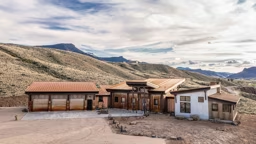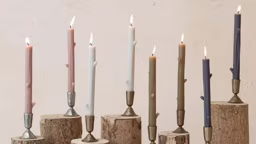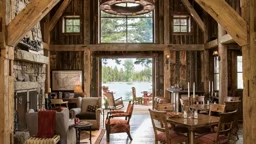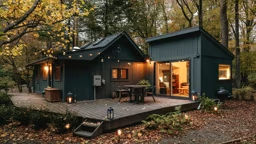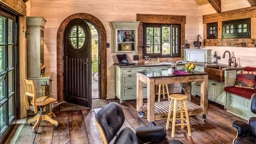Here comes the sun,
Here comes the sun,
And I say,
it’s too bright ...
Apologies to George Harrison of the Beatles notwithstanding, sometimes the intense rays of the sun can be anything but alright. In fact, if your patio or deck faces south or west, the sun can render it uninhabitable because of heat and glare at certain times of the day.
That’s when strategies to tame down a sunny day are in order. Adequate shade can reduce temperatures by 15 degrees or more, as well as block harmful UV rays that cause painful skin damage.
Shade can cut heat in adjacent interior rooms as well, making both indoor and outdoor living much more pleasant and comfortable.
Try one or more of these shademaking strategies.
Shade Trees
Don’t discount this old-fashioned, all-natural, eco-friendly, long-lasting and relatively inexpensive way to filter the sun (plus it provides a home for the birds!). Talk to nursery personnel or your Cooperative Extension Service to select a shade tree with a tall canopy that grows quickly, has non-invasive roots, won’t drop sap or debris all over your deck and, most importantly, is suitable for your region.
Umbrellas & Palapas
Umbrellas have long been the go-togadget for shade. But there’s a lot that’s new in the umbrella world.
They can be made of woven acrylic, vinyl or canvas materials to match your tastes and climate needs. Speaking of which, are you in a windy area? Look for a vented umbrella to avoid tip-overs.
To fit the shape of your deck or patio seating area, they come in round, octagonal, square or rectangular shapes – and range in size from 6 to 13 feet.
Cantilever umbrellas offset the pole to the side to maximize shade and maneuverability without obstructing the view. Other unique shapes and sleek profiles are reminiscent of sea rays or birds in flight, and thatch-covered umbrellas, called palapas, bring a little bit of the tropics to your deck.
Some of today’s most versatile umbrellas offer tilting and 360-degree rotation features, easy, push-button opening, and wheeled bases. State-of-theart models have built-in lighting, or are even wired for stereos, MP3 players and temperature gauges. Prices vary from about $100 to $3,000.
Shade Sails
First popularized in Australia, shade sails are panels of knitted polyethylene fabric cut to look like boat sails and stretched horizontally between trees, buildings and/or wood or steel posts anchored in the ground with concrete footings. Effective at blocking the sun, shade sails also bring an artistic, soaring, sculptural look to the yard. Since the panels cannot be repositioned in relation to the sun, you need to plan carefully to ensure coverage on the patio at the sunniest times of the day. A 12-foot triangular panel starts at about $160; mounting structures and hardware are extra.
Awnings
Awnings provide dense shade to an area larger than an umbrella can cover. When not in use, a retractable awning remains rolled up and mounted to the side or roof of a house and extends with the press of a button whenever the need for shade arises. Retractable awnings are available in widths up to 40 feet, and extend a maximum of 13 feet.
A stationary awning, or deck canopy, can cover a much larger area. A canvas-like acrylic fabric is stretched over permanently installed pipe framework and remains up 24/7. Another alternative is the offset canopy awning, which can tilt to the angle you need and can be freestanding, deck-mounted, or postanchored. During the winter months, the awning covering must be removed and stored if you live in an area where it snows. Fabrics for both types of awnings are made of fade-resistant, solution-dyed acrylics available in solids, stripes and patterns in a huge selection of colors. The material blocks 98 percent or more of UV rays.
The main difference between awning styles is that retractable awnings are designed to protect people by providing temporary shade over lunch on the patio or when relaxing on the deck. A permanent canopy provides continuous coverage over outdoor furniture too. Prices for both varieties run between $2,500 and $7,000 or more, depending on size and options.
Pergolas, Arbors & Lattice
These attractive, relatively permanent solutions for shade feature slatted, photo courtesy Stone Age Mfg. overhead, wood or vinyl beams supported on posts or decorative columns. The overhead beams can be spaced wide or narrow, depending on desired shade – usually between 40- and 60-percent coverage. For denser shade, the overhead slats can be covered with climbing vines, awning, plastic panels or shadecloth. Shadecloth is a knitted polyethylene fabric (like that used in shade sails) that is lightweight, breathable and blocks 30 to 90 percent of the sun. It starts at about $2.50 per linear foot.
Once a project only for construction pros, easy-to-assemble pergola kits are available for do-it-yourselfers. Some manufacturers offer customized pergolas providing greater shade on one end and more sunlight on the other, while other models feature built-in lighting. Prices run from $2,000 to $15,000.
With so many shade options to choose from, it’s easy to not only bring sun protection to your patio, but color and style as well.
So let the sun come. It’s alright.
The author enjoys cool shade on her deck all summer, writing her outdoor living stories under an awning canopy.



